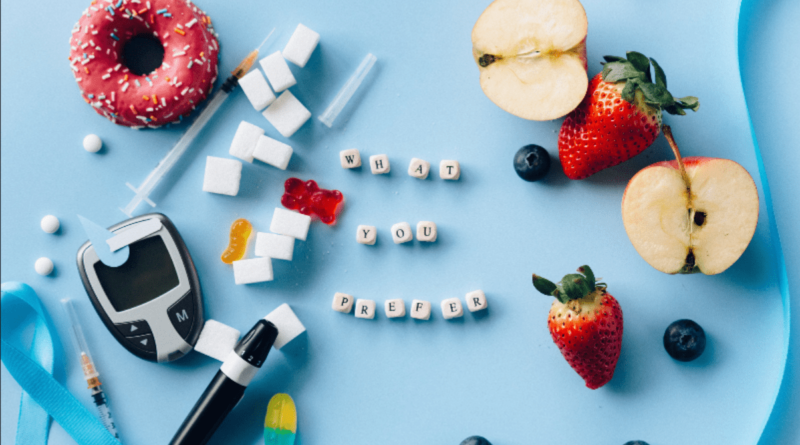What Level of Low Blood Sugar is Dangerous?
Blood sugar levels play a crucial role in maintaining our overall health and well-being. In this article, we’ll deep dive into the nuances of low blood sugar, exploring the thresholds, symptoms, and actions necessary for a healthy lifestyle.
Introduction:-
1. Significance of Blood Sugar Levels
Blood glucose, or blood sugar, is the main sugar found in your blood. It is your body’s primary source of energy. It comes from the food you eat. Your body breaks down most of that food into glucose and releases it into your bloodstream.
2. Low Blood Sugar (Hypoglycemia)
However, when these levels drop below the normal range, a condition known as hypoglycemia occurs. This phenomenon, if left unmanaged, can lead to a range of symptoms and, in severe cases, pose serious health risks.
Normal Blood Sugar Range:-
1. Understanding Healthy Blood Sugar Levels
Before delving into the danger zone of low blood sugar, it’s essential to grasp the concept of normal blood sugar levels. For most individuals, the ideal range typically hovers between 70 to 100 milligrams per deciliter (mg/dL) before meals.
2. Importance for Overall Well-being
Maintaining blood sugar within this range is crucial for overall health. It ensures a steady supply of energy to the body’s cells and supports various bodily functions, from cognitive processes to muscular activities.
Defining Low Blood Sugar:-
1. Threshold for Low Blood Sugar
When blood sugar levels drop below 70 mg/dL, individuals may start experiencing symptoms of hypoglycemia. However, the severity of symptoms can vary, and what might be mild for one person could be more pronounced for another.
2. Causes and Risk Factors
Low blood sugar can stem from various factors, including medications, excessive physical activity, delayed or missed meals, and certain medical conditions. Understanding these triggers is crucial for effective management.
Symptoms of Low Blood Sugar:-
1. Recognizing Early Signs
The body communicates distress signals when blood sugar levels dip. Early signs include shakiness, sweating, irritability, and increased heart rate. Recognizing these symptoms promptly empowers individuals to take action.
2. Impact on Physical and Mental Well-being
Low blood sugar doesn’t only affect the body physically but can also impact mental well-being. Confusion, difficulty concentrating, and mood swings are common manifestations, emphasizing the holistic nature of its effects.
Immediate Action for Mild Hypoglycemia:-
1. Fast-Acting Carbohydrates
When faced with mild hypoglycemia, swift action is key. Consuming fast-acting carbohydrates, such as fruit juice or glucose tablets, can help raise blood sugar levels promptly, alleviating symptoms.
2. Monitoring Blood Sugar Levels
Following the intervention, it’s essential to monitor blood sugar levels to ensure they stabilize within the target range. Regular monitoring empowers individuals to gauge the effectiveness of their chosen remedy.
Moderate Hypoglycemia: Taking It Seriously:-
1. Symptoms Intensify
As blood sugar levels continue to drop, symptoms intensify. Difficulty concentrating, blurred vision, and coordination problems may become more pronounced. This stage requires more immediate and focused intervention.
2. Importance of Prompt Intervention
In cases of moderate hypoglycemia, the urgency of intervention cannot be overstated. Delayed action may lead to a progression into severe hypoglycemia, which poses heightened risks.
Severe Hypoglycemia: A Medical Emergency:-
1. Loss of Consciousness and Seizures
Severe hypoglycemia is marked by blood sugar levels falling below 36 mg/dL. At this stage, individuals may experience loss of consciousness or seizures, requiring immediate medical attention.
2. Emergency Medical Assistance
Emergency services should be summoned promptly for individuals experiencing severe hypoglycemia. Swift intervention can prevent further complications and ensure the individual receives the necessary medical care.
Blood Sugar Monitoring Techniques:-
1. Glucometers and Continuous Glucose Monitoring
Monitoring blood sugar levels is a fundamental aspect of managing hypoglycemia. Tools like glucometers and continuous glucose monitoring devices provide real-time insights, empowering individuals to make informed decisions about their health.
2. Regular Monitoring for Individuals at Risk
For individuals at risk of hypoglycemia, such as those with diabetes, regular monitoring becomes a proactive measure. It allows for the early detection of fluctuations, enabling timely adjustments in diet, medication, or activity levels.
Risk Reduction Strategies:-
1. Medication Management
Individuals on medications that can induce hypoglycemia, such as insulin or certain oral medications, must work closely with healthcare professionals to manage dosages effectively.
2. Balancing Diet and Physical Activity
Maintaining a balanced lifestyle is paramount. Consistent meal patterns, incorporating complex carbohydrates, and adjusting physical activity levels help stabilize blood sugar and reduce the risk of hypoglycemia.
Future Trends in Blood Sugar Management:-
1. Advancements in Continuous Monitoring
The future of blood sugar management holds exciting possibilities. Advancements in continuous monitoring technologies, including wearable devices and integrated health platforms, promise more seamless and user-friendly experiences.
2. Technological Innovations for Improved Control
Innovation continues to drive the evolution of blood sugar management. From smart insulin delivery systems to artificial intelligence-driven personalized recommendations, technology is poised to revolutionize how individuals manage their glucose levels.
Conclusion:-
In conclusion, understanding the danger zone of low blood sugar is crucial for everyone, especially those at risk. Recognizing symptoms, taking immediate action, and seeking professional guidance contribute to effective management.
Increased awareness about blood sugar levels and hypoglycemia is the cornerstone of a healthier society. By fostering understanding and dispelling myths, we can collectively contribute to a community that supports individuals in their journey to optimal health.
FAQs:-
Que 1. How do I know if my blood sugar is too low?
Ans. Symptoms of low blood sugar include shakiness, sweating, irritability, and difficulty concentrating. Regular monitoring with a glucometer provides accurate insights.
Que 2. What is the immediate treatment for mild hypoglycemia?
Ans. Fast-acting carbohydrates, such as fruit juice or glucose tablets, are recommended for mild hypoglycemia. Followed by monitoring blood sugar levels to ensure stabilization.
Que 3. When is hypoglycemia considered severe?
Ans. Severe hypoglycemia is characterized by blood sugar levels below 36 mg/dL. It may lead to loss of consciousness or seizures, necessitating emergency medical assistance.
Que 4. How can I reduce the risk of hypoglycemia?
Ans. Strategies include consistent medication management, balancing diet and physical activity, and regular monitoring. Individualized approaches with healthcare professionals are essential.
Que 5. What are the future trends in blood sugar management?
Ans. Future trends include advancements in continuous monitoring technologies, smart insulin delivery systems, and personalized recommendations driven by artificial intelligence.




